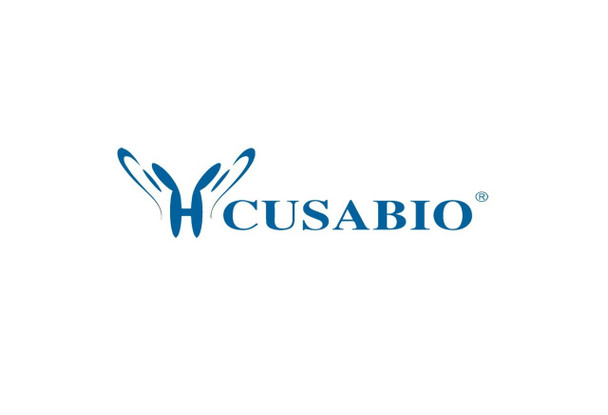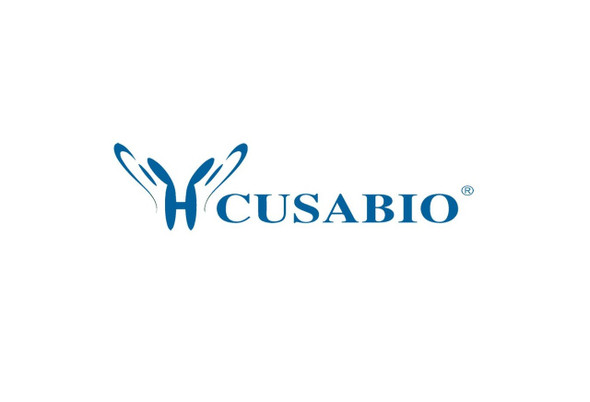Cusabio Human Recombinants
Recombinant Human Interferon regulatory factor 1 (IRF1) (K29R) | CSB-EP011814HU(M1)
- SKU:
- CSB-EP011814HU(M1)
- Availability:
- 3 - 7 Working Days
Description
Recombinant Human Interferon regulatory factor 1 (IRF1) (K29R) | CSB-EP011814HU(M1) | Cusabio
Alternative Name(s): IRF-1
Gene Names: IRF1
Research Areas: Cardiovascular
Organism: Homo sapiens (Human)
AA Sequence: MPITRMRMRPWLEMQINSNQIPGLIWINREEMIFQIPWKHAAKHGWDINKDACLFRSWAIHTGRYKAGEKEPDPKTWKANFRCAMNSLPDIEEVKDQSRNKGSSAVRVYRMLPPLTKNQRKERKSKSSRDAKSKAKRKSCGDSSPDTFSDGLSSSTLPDDHSSYTVPGYMQDLEVEQALTPALSPCAVSSTLPDWHIPVEVVPDSTSDLYNFQVSPMPSTSEATTDEDEEGKLPEDIMKLLEQSEWQPTNVDGKGYLLNEPGVQPTSVYGDFSCKEEPEIDSPGGDIGLSLQRVFTDLKNMDATWLDSLLTPVRLPSIQAIPCAP
Source: E.coli
Tag Info: N-terminal 10xHis-tagged and C-terminal Myc-tagged
Expression Region: 1-325aa(K29R)
Sequence Info: Full Length
MW: 41.5 kDa
Purity: Greater than 85% as determined by SDS-PAGE.
Relevance: Transcriptional regulator which displays a remarkable functional diversity in the regulation of cellular responses. These include the regulation of IFN and IFN-inducible genes, host response to viral and bacterial infections, regulation of many genes expressed during hematopoiesis, inflammation, immune responses and cell proliferation and differentiation, regulation of the cell cycle and induction of growth arrest and programmed cell death following DNA damage. Stimulates both innate and acquired immune responses through the activation of specific target genes and can act as a transcriptional activator and repressor regulating target genes by binding to an interferon-stimulated response element in their promoters. Its target genes for transcriptional activation activity include: genes involved in anti-viral response, such as IFN-alpha/beta, DDX58/RIG-I, TNFSF10/TRAIL, OAS1/2, PIAS1/GBP, EIF2AK2/PKR and RSAD2/viperin; antibacterial response, such as NOS2/INOS; anti-proliferative response, such as p53/TP53, LOX and CDKN1A; apoptosis, such as BBC3/PUMA, CASP1, CASP7 and CASP8; immune response, such as IL7, IL12A/B and IL15, PTGS2/COX2 and CYBB; DNA damage responses and DNA repair, such as POLQ/POLH; MHC class I expression, such as TAP1, PSMB9/LMP2, PSME1/PA28A, PSME2/PA28B and B2M and MHC class II expression, such as CIITA. Represses genes involved in anti-proliferative response, such as BIRC5/survivin, CCNB1, CCNE1, CDK1, CDK2 and CDK4 and in immune response, such as FOXP3, IL4, ANXA2 and TLR4. Stimulates p53/TP53-dependent transcription through enhanced recruitment of EP300 leading to increased acetylation of p53/TP53. Plays an important role in immune response directly affecting NK maturation and activity, macrophage production of IL12, Th1 development and maturation of CD8+ T-cells. Also implicated in the differentiation and maturation of dendritic cells and in the suppression of regulatory T cells development. Acts as a tumor suppressor and plays a role not only in antagonism of tumor cell growth but also in stimulating an immune response against tumor cells.
Reference: "Sequence of a cDNA coding for human IRF-1." Maruyama M., Fujita T., Taniguchi T. Nucleic Acids Res. 17:3292-3292(1989)
Storage: The shelf life is related to many factors, storage state, buffer ingredients, storage temperature and the stability of the protein itself. Generally, the shelf life of liquid form is 6 months at -20?/-80?. The shelf life of lyophilized form is 12 months at -20?/-80?.
Notes: Repeated freezing and thawing is not recommended. Store working aliquots at 4? for up to one week.
Function:
Involvement in disease:
Subcellular Location:
Protein Families:
Tissue Specificity:
Paythway:
Form: Liquid or Lyophilized powder
Buffer: If the delivery form is liquid, the default storage buffer is Tris/PBS-based buffer, 5%-50% glycerol. If the delivery form is lyophilized powder, the buffer before lyophilization is Tris/PBS-based buffer, 6% Trehalose, pH 8.0.
Reconstitution: We recommend that this vial be briefly centrifuged prior to opening to bring the contents to the bottom. Please reconstitute protein in deionized sterile water to a concentration of 0.1-1.0 mg/mL.We recommend to add 5-50% of glycerol (final concentration) and aliquot for long-term storage at -20?/-80?. Our default final concentration of glycerol is 50%. Customers could use it as reference.
Uniprot ID: P10914
HGNC Database Link: N/A
UniGene Database Link: N/A
KEGG Database Link: N/A
STRING Database Link: N/A
OMIM Database Link: N/A


-SDS__25893.1638524189.jpg?c=1)

-SDS__25893.1638524189.jpg?c=1)




